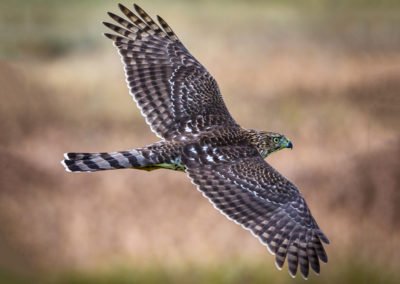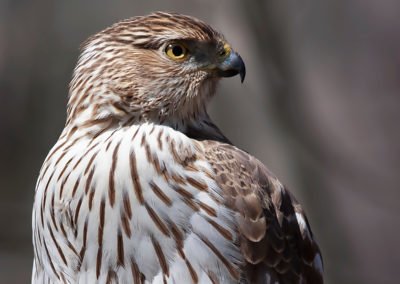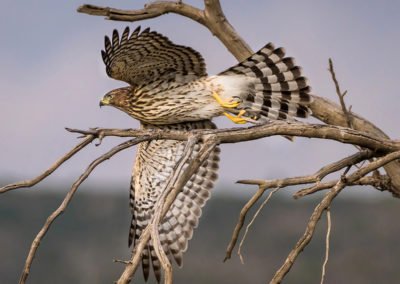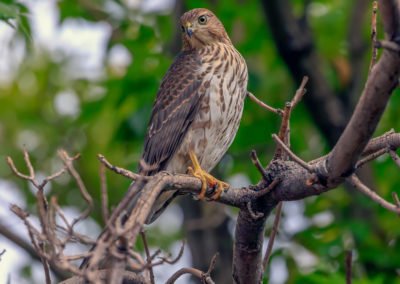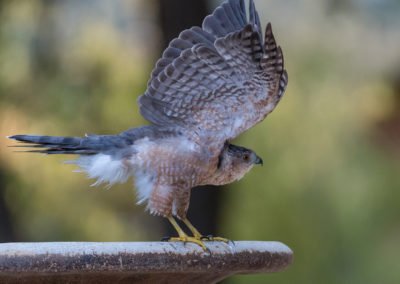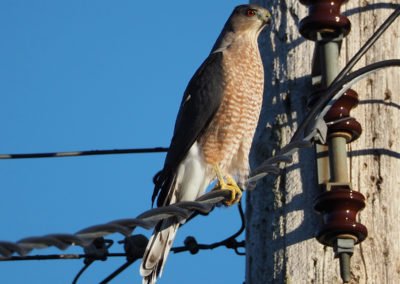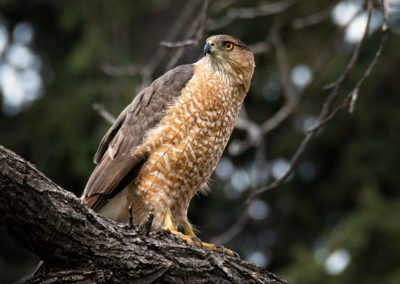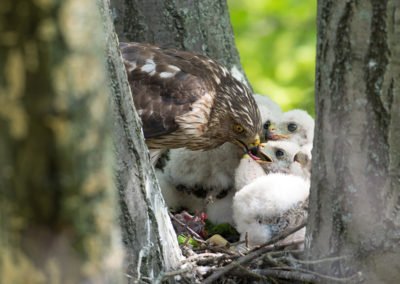For more information
Cooper’s Hawk. Hawkwatch International.
Lessons about Seattle from the Cooper’s Hawk. 2017. Crosscut.
Rosenfield, R. 2018. The Cooper’s Hawk: Breeding Ecology and Natural History of a Winged Huntsman. Hancock House.
Rosenfield, RN, Mannan, W, & Millsap, BA. 2018. Cooper’s Hawks: The bold backyard hunters. In Urban Raptors: Ecology and Conservation of Birds of Prey in Cities. Ed. by CW Boal & CR Dykstra. Island Press.
Seattle Cooper’s Hawk Project. Urban Raptor Conservancy.
Cooper’s Hawk
Accipiter cooperii
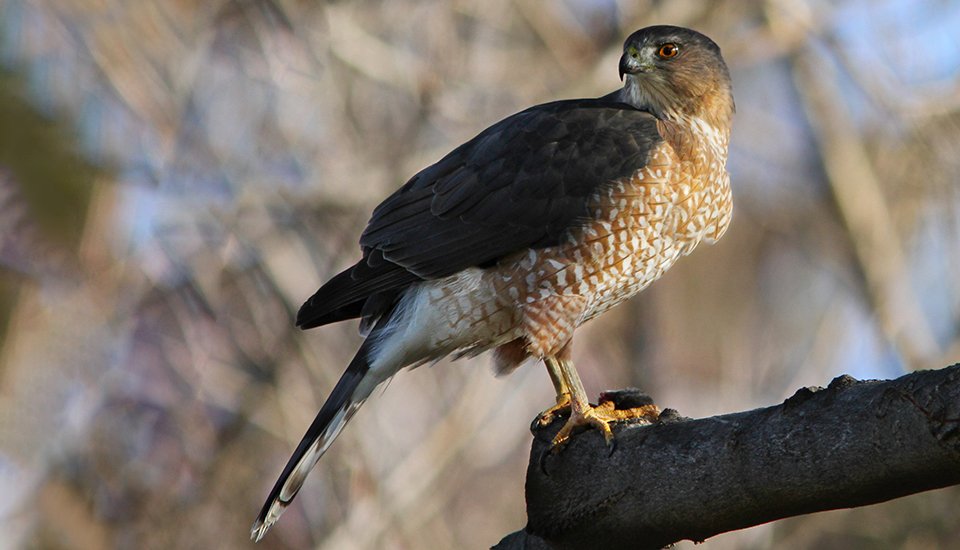
Adult Cooper’s Hawk.
Mircea Costina, Shutterstock.
Urban History
Cooper’s hawks are the most common accipiter in North America. They began nesting in numbers in cities across the continent in the 1980s and 1990s. Three main reasons probably account for their growing abundance: recovery from the effects of the pesticide DDT, less persecution by humans in cities (they were once known as “chicken hawks”), and their relative tolerance for nesting close to human activity.
Cooper’s Hawks have probably always nested in Seattle in small numbers, except perhaps after the first clear-cutting of the city in the 1800s. Bud Anderson (Falcon Research Group) reported learning of a nest in the 1960s in the large West Duwamish Greenbelt.
Although commonly found in forests, urban “Coops” also nest in parks and suburbs. As of 2018, 46 active nests were known in Seattle.

Double Infanticide by Cooper’s Hawk and Crows
Cooper’s Hawks and crows nest in similar habitats, often nearby. During nesting season, each species is fiercely vigilant against the other, with good reason. They miss no opportunity plunder each other’s nests for eggs and nestlings to feed to their own voracious young.
Cooper’s Hawks have nested in the Victory Heights neighborhood of Seattle for many years. In 2016, they nested in a tall white pine (the same tree where the first known Seattle Merlin nest was found in 2008).
Early one June morning, a neighbor, alerted by a mob of squawking crows, witnessed a Cooper’s Hawk on a fledgling crow kill one block from the Coop nest.
Later that morning, a swirling mob of at least 50 crows massed in the trees close to the Coop nest tree. A witness then described a mass attack by the crows on the Coop nest. Waves of crows overpowered and drove off the female Coop, while another group assaulted the nest, taking one chick. The Coop chick was carried across the street and dropped from a considerable height, and it died. After the
Surprisingly, the Cooper’s Hawk nest still had chicks after the attack, and three youngsters eventually fledged.
